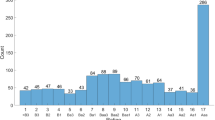Abstract
Credit rating agencies are being widely criticized because the lack of transparency in their rating procedures and the huge impact of the ratings they disclose, mainly their sovereign credit ratings. However the rationale seems to be that although credit ratings have performed worse than their aim, they are still the best available solution to provide financial markets with the information that their participants base their decisions on. This research work proposes a neural network system that simulates the sovereign credit ratings provided by two of the most important international agencies. Results indicate that the proposed system, based on a three layers structure of feed-forward neural networks, can model the agencies’ sovereign credit ratings with a high accuracy rate, using a reduced set of publicly available economic data. The proposed model can be further developed in order to extent the use of neural networks to model other ratings, create new ratings with specific purposes, or forecast future ratings of credit rating agencies.
Access this chapter
Tax calculation will be finalised at checkout
Purchases are for personal use only
Preview
Unable to display preview. Download preview PDF.
Similar content being viewed by others
References
Bennell, J.A., Crabbe, D., Thomas, S., ap Gwilym, O.: Modelling sovereign credit ratings: Neural networks versus ordered probit. Expert Systems with Applications 30, 415–425 (2006)
Taffler, R.: The assessment of company solvency and performance using a statistical model. Accounting and Business Research 13, 295–307 (1983)
Horton, J.J.: Statistical classification of municipal bonds. Journal of Bank Research 3(1), 29–40 (1970)
Trevino, L., Thomas, S.: Local versus foreign currency ratings: What determines sovereign transfer risk? Journal of Fixed Income 11(1), 65–76 (2001)
Bessis, J.: Risk management in banking, 2nd edn. Wiley, West Sussex (2002)
Trigueiros, D., Taffler, R.: Neural networks and empirical research in accounting. Accounting and Business Research 26, 347–355 (1996)
Vellido, A., Lisboa, P.J.G., Vaughan, J.: Neural networks in business: a survey of applications (1992-1998). Expert Systems with Applications 17, 51–70 (1999)
Malhotra, R., Malhotra, D.K.: Evaluating consumer loans using neural networks. Omega 31(2), 83–96 (2003)
Granger, C.W.J.: Developments in the nonlinear analysis of economic series. The Scandinavian Journal of Economics 93(2), 263–276 (1991)
Kim, J.W., Weistroffer, H.R., Redmond, R.T.: Expert systems for bond rating: A comparative analysis of statistical, rule-based and neural network systems. Expert Systems 10, 167–188 (1993)
Leshno, M., Spector, Y.: Neural network prediction analysis: The bankruptcy case. Neurocomputing 10, 125–147 (1996)
Ahn, B.S., Cho, S.S., Kim, C.Y.: The integrated methodology of rough set theory and artificial neural network for business failure prediction. Expert Systems with Applications 18(2), 65–74 (2000)
Baesens, B., Setiono, R., Mues, C., Vanthienen, J.: Using Neural Network Rule Extraction and Decision Tables for Credit-Risk Evaluation. Management Science 49(3), 312–329 (2003)
Chaveesuk, R., Srivaree-Ratana, C., Smith, A.E.: Alternative neural network approaches to corporate bond rating. Journal of Engineering Valuation and Cost Analysis 2(2), 117–131 (1999)
Kräussl, R.: Do credit rating agencies add to the dynamics of emerging market crises? Journal of Financial Stability 1, 355–385 (2005)
Cantor, R., Packer, F.: Differences in opinion and selection bias in the credit rating industry. Journal of Banking and Finance 21, 1395–1417 (1997)
Stolper, A.: Regulation of credit rating agencies. Journal of Banking and Finance 33, 1266–1273 (2009)
Falavigna, G.: Financial ratings with scarce information: A neural network approach. Expert Systems with Applications 39, 1784–1792 (2012)
Hájek, P.: Municipal credit rating modelling by neural networks. Decision Support Systems 51, 108–118 (2011)
Mora, N.: Sovereign credit ratings: guilty beyond reasonable doubt? Journal of Banking and Finance 30(7), 2041–2062 (2006)
Alsakka, R., ap Gwilym, O.: Leads and lags in sovereign credit ratings. Journal of Banking & Finance 34, 2614–2626 (2010)
Kim, S.-J., Wu, E.: Sovereign credit ratings, capital flows and financial sector development in emerging markets. Emerging Markets Review 9, 17–39 (2008)
Erb, C., Harvey, C.R., Viskanta, T.: Understanding Emerging Market Bonds. Emerging Markets Quarterly, 7–23 (Spring 2000)
Van Gestel, T., Baesens, B., Van Dijcke, P., Garcia, J., Suykens, J.A.K., Vanthienen, J.: A process model to develop an internal rating system: Sovereign credit ratings. Decision Support Systems 42, 1131–1151 (2006)
Cantor, R., Packer, F.: Sovereign Credit Ratings. Current Issues in Economics and Finance 1(3) (1995)
Basel Committee on Banking Supervision: International convergence of capital measurement and capital standards (2004)
Alsakka, R., ap Gwilym, O.: Heterogeneity of sovereign rating migrations in emerging countries. Emerging Markets Review 10, 151–165 (2009)
Cantor, R., Packer, F.: Determinants and inputs of sovereign credit ratings. FRBNY Economic Policy Review 2(2), 37–53 (1996)
Afonso, A.: Understanding the determinants of sovereign debt ratings: evident for the two leading agencies. Journal of Economics and Finance 27(1), 56–74 (2003)
Beers, D.T., Cavanaugh, M.: Sovereign credit ratings: A primer. Standard & Poor’s Counterparty Ratings Guides, 1st Quarter (1999)
Truglia, V.J.: Moody’s sovereign ratings: A ratings guide, Moody’s Iinvestors Service Global Credit Research, special comment (March 1999)
World Economic Outlook Database: International Monetary Fund (September 2011)
AMECO database of the European Commission’s Directorate General for Economic and Financial Affair (2011)
Hornik, K., Stinchcombe, M., White, H.: Multilayer feedforward networks are universal approximators. Neural Networks 2, 359–366 (1989)
Min, J.H., Lee, Y.-C.: Bankruptcy prediction using support vector machine with optimal choice of kernel function parameters. Expert Systems with Applications 28, 603–614 (2005)
Beale, M.H., Hagan, M.T., Demuth, H.B.: Neural Network ToolboxTM User’s Guide. The MathWorks, Inc., Natick M.A (2010)
Chauhan, N., Ravi, V., Chandra, D.K.: Differential evolution trained wavelet neural networks: Application to bankruptcy prediction in banks. Expert Systems with Applications 36, 7659–7665 (2009)
Author information
Authors and Affiliations
Editor information
Editors and Affiliations
Rights and permissions
Copyright information
© 2012 Springer-Verlag Berlin Heidelberg
About this paper
Cite this paper
León-Soriano, R., Muñoz-Torres, M.J. (2012). Using Neural Networks to Model Sovereign Credit Ratings: Application to the European Union. In: Engemann, K.J., Gil-Lafuente, A.M., Merigó, J.M. (eds) Modeling and Simulation in Engineering, Economics and Management. MS 2012. Lecture Notes in Business Information Processing, vol 115. Springer, Berlin, Heidelberg. https://doi.org/10.1007/978-3-642-30433-0_3
Download citation
DOI: https://doi.org/10.1007/978-3-642-30433-0_3
Publisher Name: Springer, Berlin, Heidelberg
Print ISBN: 978-3-642-30432-3
Online ISBN: 978-3-642-30433-0
eBook Packages: Computer ScienceComputer Science (R0)




